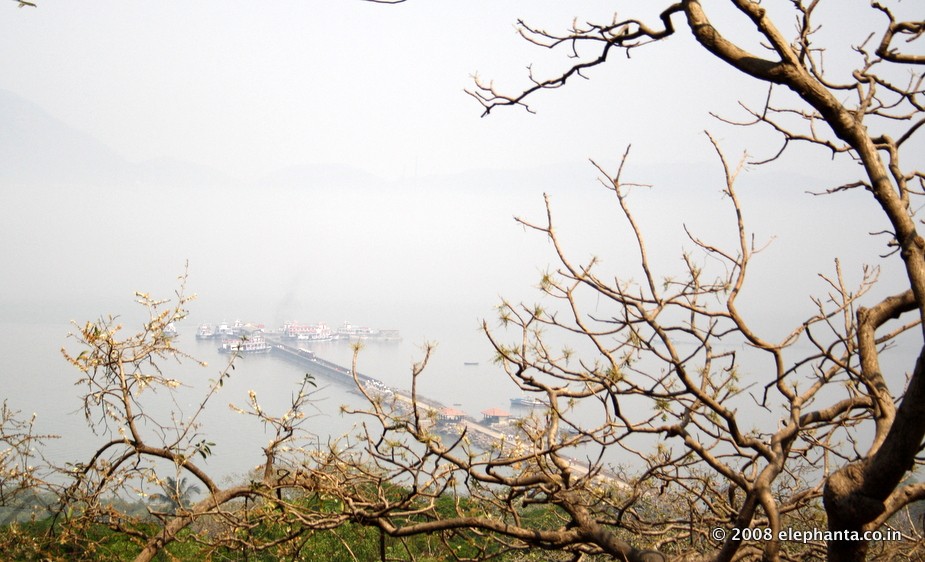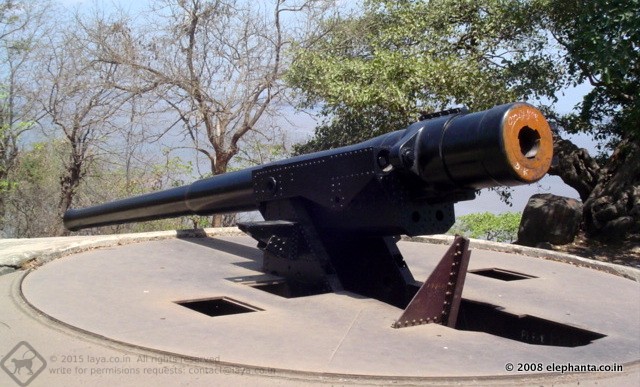History of Elephanta
The most convincing of the theories on its origin tell Elephanta caves were executed during the period 450 to 750 AD. Incidentally, this period also marks the decline of Buddhism in India and the revival of the Brahmanical traditions.

View from Elephanta Island
View from Elephanta Island
T
he warrior king Pulakesin II of the Chalukyas of Badami dynasty, is attributed with commissioning of a significant portion of the caves.Elephanta Island came under the dominions of at least half a dozen powers that ruled this region over the centuries 400 BC to the modern times.
That include the Mauryas of Konkan, Trikutakas , Chalukyas of Badami, Silaharas, Rashtrakutas , Kalyani Chalukyas , Yadavas of Deogiri, Shahi dynasty of Gujarat , the Portuguese , the Marathas and also the British. The Island was called Gharapuri.
The caves of Shiva were most likely executed during the mid 6th century during the Konkan Maurya's period. Being a major ancient trade gateway, it is also likely that its patrons were the rich trade-merchant guilds, than any particular king.
Even before the Hindu caves were excavated, the island was a Buddhist center. The remains of the Buddhists Stupas in Elephanta probably belongs to the early phase of Buddhism dating 2nd century BC.
During the early colonial period the clusters of islands that eventually became the modern day Mumbai was under Portuguese control.
Apart from the natural causes, a great deal of damage to the sculptures in Elephanta is attributed to the Portuguese soldiers. It was recorded by many European travelers, the vandalism caused to the caves during this period.
The sculptured panels were used for shooting practices. For the bulk of the panels, the lower sections were destroyed, faces disfigured. They did everything possible to break that massive elephant that once stood on the shore. In fact the Portuguese gave the name Elephanta to this island thanks to this sculpture, otherwise the island was called Gharapuri ('Island of Caves'). This finally collapsed in 1814, the British moved it to the mainland and assembled at the Victoria Garden in Mumbai.
In 1540 a large inscribed stone at the entry point of the island was taken to Portuguese by the Portuguese viceroy João de Castro, allegedly for the epigraphical decipherment of inscriptions written on it.
This stone went untraceable. Gone with it is a very valuable piece of historic artifact that could throw some light on the circumstance led to the execution of these caves, and more importantly who were its patrons.
In 1661 the cluster of islands that formed Mumbai came to the British Crown as dowry of the marriage treaty of Charles II of England and Catherine of Braganza, daughter of King John IV of Portugal, but Elephanta excluded. This island remains as a Portuguese outpost for some times to come.
From an anti-piracy and military standpoint point, the island remained a strategic point, especially when Mumbai was gradually made into a busy port city in the subsequent centuries. You can still see a few cannon outposts at a place called the Cannon Hills in Elephanta.
The earliest conservation efforts is dated to 1890 under the then Bombay Public Works Department.

Canon in Elephanta
From an anti-piracy and military standpoint point, the island remained a strategic point, especially when Mumbai was gradually made into a busy port city in the subsequent centuries. You can still see a few cannon outposts at a place called the Cannon Hills in Elephanta.
